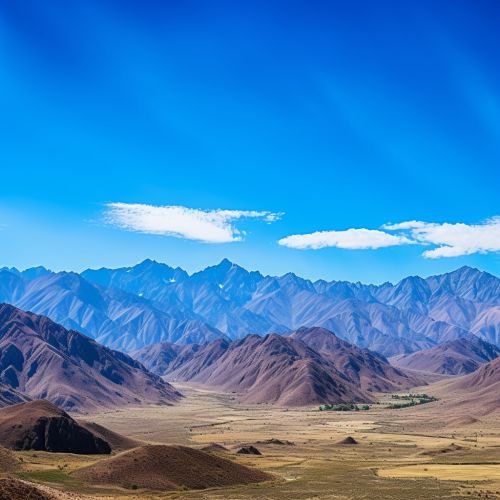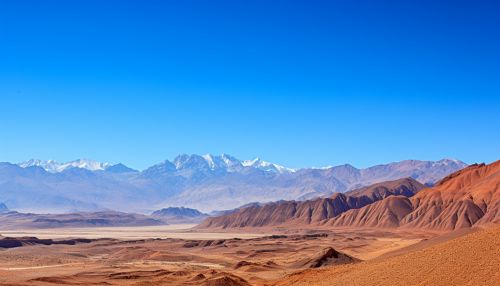Andean orogeny
Introduction
The Andean orogeny is a significant geological event that shaped the landscape of the South American continent. This process, which is still ongoing, has resulted in the formation of the Andes Mountains, one of the most extensive mountain ranges in the world. The Andean orogeny is characterized by a complex series of tectonic activities, including subduction, uplift, and deformation, which have been occurring for millions of years.
Geological Context
The Andean orogeny is part of the broader tectonic activity associated with the Pacific Ring of Fire, a major area of seismic and volcanic activity that encircles the Pacific Ocean. The process began in the Jurassic period, approximately 200 million years ago, when the Nazca Plate began its eastward subduction beneath the South American Plate. This subduction process is primarily responsible for the uplift and formation of the Andes.


Tectonic Processes
The primary tectonic process involved in the Andean orogeny is subduction, where one tectonic plate moves beneath another. In this case, the oceanic Nazca Plate is subducting beneath the continental South American Plate. As the Nazca Plate subducts, it causes the overlying South American Plate to deform and uplift, resulting in the formation of the Andes.
In addition to subduction, other tectonic processes are also at play. These include crustal shortening, where the crust is compressed and thickened, and crustal extension, where the crust is stretched and thinned. These processes contribute to the complex topography of the Andes, which includes high mountain peaks, deep valleys, and extensive plateaus.
Phases of the Andean Orogeny
The Andean orrogeny can be divided into several phases, each characterized by different tectonic and geological processes. These phases include the initial subduction and uplift, the intense deformation and crustal shortening, and the current phase of crustal extension and uplift.
The initial phase of the Andean orogeny began in the Jurassic period, with the onset of subduction. This was followed by a period of intense deformation and crustal shortening during the Cretaceous and early Tertiary periods. The current phase of the Andean orogeny, which began in the late Tertiary period, is characterized by crustal extension and continued uplift.
Impact on Biodiversity
The Andean orogeny has had a profound impact on the biodiversity of South America. The uplift of the Andes has created a wide range of habitats, from high-altitude alpine environments to lowland tropical forests. This diversity of habitats has led to the evolution of a rich array of species, many of which are endemic to the Andes.
In addition, the Andean orogeny has influenced patterns of species distribution and speciation. The formation of the Andes has created physical barriers that have isolated populations and led to the evolution of new species. This process, known as vicariance, is a major driver of biodiversity in the Andes.
Economic Significance
The Andean orogeny has also had significant economic implications. The tectonic processes associated with the orogeny have led to the formation of numerous mineral deposits, including copper, gold, and silver. These resources have been extensively mined and have contributed to the economies of many Andean countries.
Furthermore, the Andes Mountains, formed as a result of the Andean orogeny, are a major source of water for many regions of South America. The mountains capture moisture from the Pacific Ocean, which is then released as precipitation. This water is essential for agriculture, human consumption, and hydroelectric power.
Conclusion
The Andean orogeny is a complex and ongoing geological process that has shaped the landscape of South America. Through a series of tectonic activities, it has resulted in the formation of the Andes Mountains, influenced biodiversity, and had significant economic impacts. As such, understanding the Andean orogeny is crucial for understanding the geology, ecology, and human history of South America.
